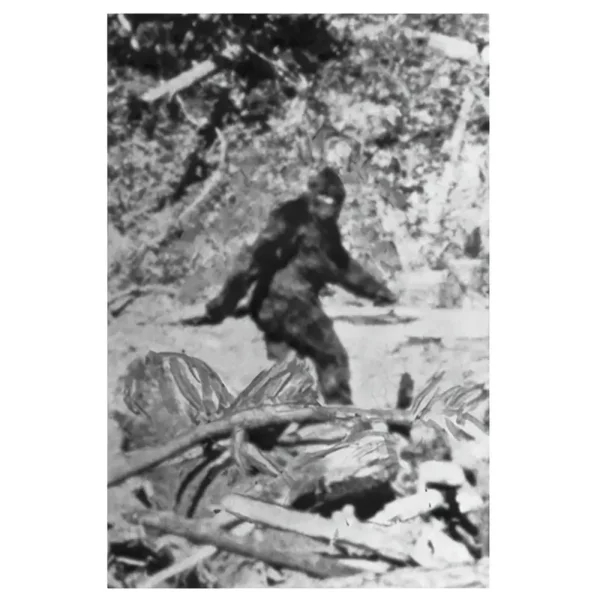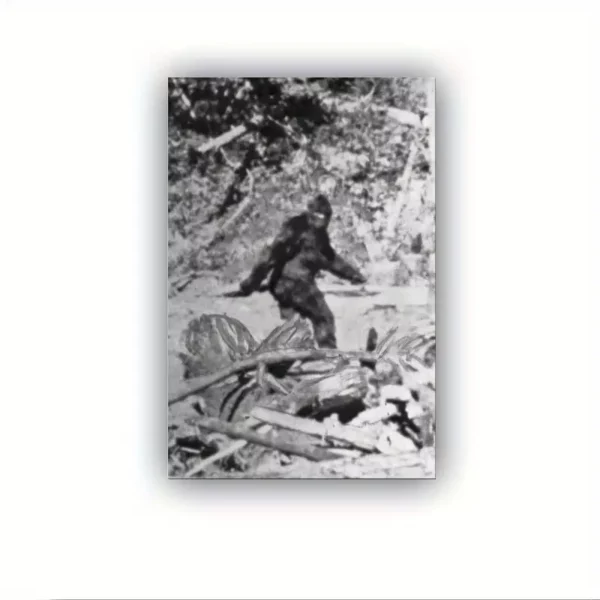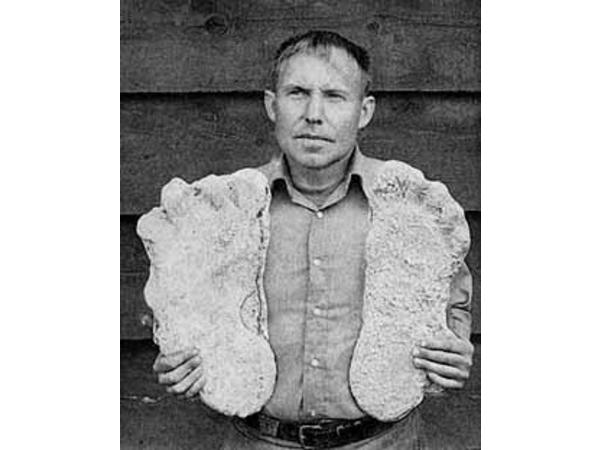Analysis on a less known analysis of the Patterson Film points out highly flawed logic and bad reasoning that played an important role in dismissing this film as fake. Let me show you why this 1960’s attitude never gave this film a chance.
The Patterson-Gimlin film, shot on October 20, 1967, by Roger Patterson and Bob Gimlin, is one of the most famous and debated pieces of evidence in the Bigfoot legend. Captured in Bluff Creek, Northern California, the short footage shows a large, bipedal creature, often referred to as “Patty,” walking along a creek bed before disappearing into the forest.
The film has been analyzed extensively by experts in various fields, including anthropology, zoology, and special effects. Supporters argue that the creature’s gait, limb proportions, and muscle movements are difficult to replicate with the technology available in the 1960s. Skeptics, however, suggest it could be a hoax, possibly involving a person in a costume.
Despite these efforts, no definitive proof has emerged to debunk the footage, and many experts continue to struggle with replicating its realism. The debate remains one of the most enduring mysteries in cryptid research.
🦍 Summary of the Patterson–Gimlin Bigfoot Controversy
The Patterson–Gimlin film, shot on October 20, 1967, in Bluff Creek, Northern California, is one of the most iconic and hotly debated pieces of evidence in Bigfoot lore. It shows a large, bipedal creature—nicknamed “Patty”—walking across a creek bed before disappearing into the forest2.
🔍 Key Points of the Controversy:
- Supporters argue the creature’s gait, muscle movement, and proportions are too realistic to be a person in a costume, especially given the limited special effects technology of the 1960s.
- Skeptics claim it’s a hoax, possibly involving a man in a suit. Some individuals, like Bob Heironimus, have claimed to be the person in the costume, while costume designer Phillip Morris said he sold the suit to Patterson.
- Scientific analysis has been inconclusive. Experts in anatomy, primatology, and film have studied the footage for decades, but no one has definitively proven it to be fake—or real3.
- Roger Patterson maintained the film’s authenticity until his death in 1972. Bob Gimlin, more reserved for years, has consistently denied involvement in any hoax.
- The film’s realism continues to challenge skeptics. Even Hollywood professionals have struggled to replicate the creature’s movement convincingly.
🧠 Cultural Impact:
The film transformed Bigfoot from regional folklore into a global phenomenon. It remains a cornerstone of cryptozoology and has inspired documentaries, debates, and countless investigations.
Patterson Gimlin Patty the Bigfoot Canvas Print, 18×12
Canvas Print
No Frame
8″x12″
10 in stock
Patterson Gimlin Patty the Bigfoot Canvas Print, Wood Framing
Canvas Print
Wood Frame
8″x12″
1 in stock
Sponsored Products
Your support Helps us pay for this site and conduct Analysis Research, everything helps… besides, you get Cool Bigfoot STUFF…
- Quick View
- Quick View
-
Quick View
Bigfoot Car Cup Holder Coasters, USA Flag Background 2pcs Universal Car Anti-slip Coasters
$12.00 Add to cart -
Quick View
Bigfoot with USA Flag Background, Vertical Metal Sign (Slight Bend SPECIAL)
Original price was: $10.00.$5.97Current price is: $5.97. Add to cart








